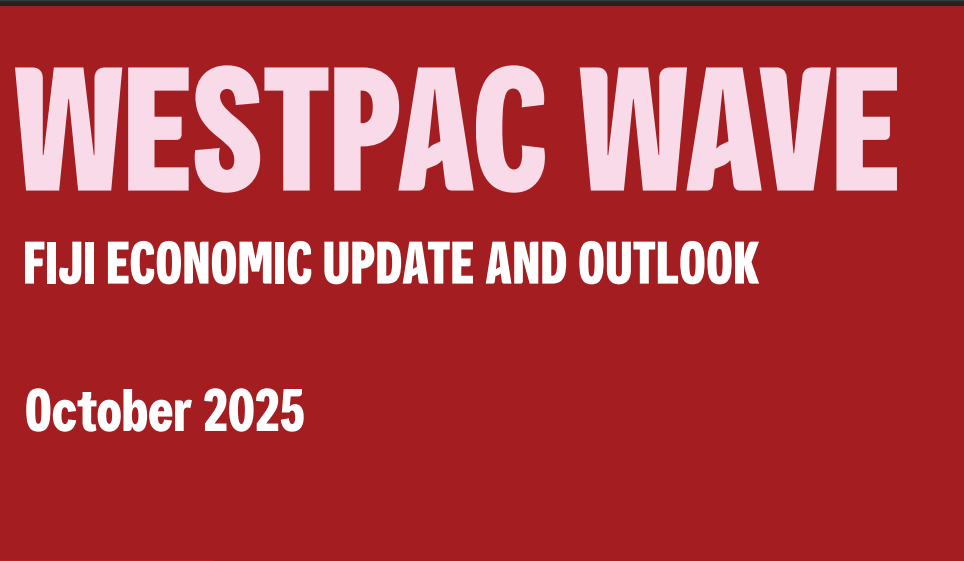Fiji’s economy is entering a period of moderation following two years of strong post-pandemic recovery, according to the latest Westpac Wave Fiji Economic Update.
After surging by 17.7 percent in 2022 and 9.4 percent in 2023, growth slowed to 3.5 percent in 2024 and is forecast to expand by 3.0 percent in 2025.
Westpac says the medium-term outlook suggests growth stabilising at around 3.3 to 3.4 percent, consistent with Fiji’s historical average. The transition marks a shift from recovery-driven momentum to more sustainable growth, supported by tourism, remittances, and domestic consumption.
The recent GDP rebasing to 2019 levels reveals notable structural changes in Fiji’s economy. Agriculture’s contribution increased from 6.5 to 11.3 percent, while net taxes fell from 21.3 to 15.1 percent. Stronger performances were recorded in wholesale and retail trade, accommodation, and construction, reflecting resilient consumption and a tourism-led recovery.
However, the forecast for 2025 has been tempered by expectations of flat visitor arrivals and a downward revision in remittance growth from 10 to 5 percent. Despite robust tourist inflows in August, arrivals declined in September, a trend expected to continue for the rest of the year.
Inflation is projected to turn negative at –1.3 percent on average in 2025, with easing food and transport costs driving the decline. Inflation is expected to return to positive territory in 2026, gradually rising to 2.5–2.8 percent.
The report highlights significant infrastructure investments as a key driver of medium-term growth. Energy Fiji Limited plans nearly $2 billion in renewable energy projects over the next five years, while large-scale hotel developments such as Tabua Tower in Suva and Koro Fiji in Nadi will strengthen tourism and construction activity.
Overall, Westpac describes Fiji’s economic outlook as one of “cautious optimism”, supported by key sectors but tempered by global uncertainty and structural challenges.



